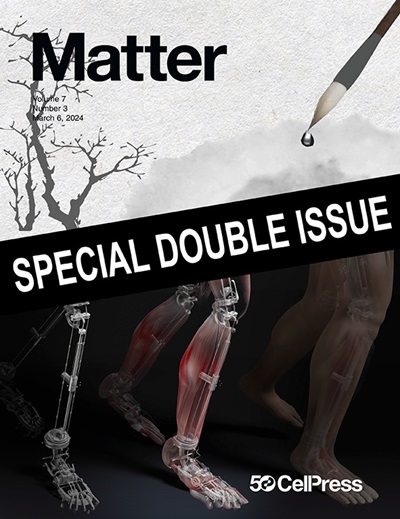Microenvironment matters in nitrate eduction
IF 17.3
1区 材料科学
Q1 MATERIALS SCIENCE, MULTIDISCIPLINARY
引用次数: 0
Abstract
Electrochemical nitrate reduction (NO3−RR) is strongly influenced by the interfacial microenvironment. In a recent publication in the Journal of the American Chemical Society, Park et al.1 developed a “hydronium-in-salt” electrolyte that confines hydronium (H3O+) and nitrate (NO3−) ions within the solvation shell of Li+ ions, thereby facilitating the proton-coupled electron transfer from H3O+ to NO3−.
微环境影响硝酸盐的排出
电化学硝酸还原(NO3−RR)受界面微环境的强烈影响。在美国化学学会杂志最近发表的一篇文章中,Park等人1开发了一种“盐中氢”电解质,该电解质将水合氢离子(h30 +)和硝酸盐(NO3−)离子限制在Li+离子的溶剂化壳内,从而促进质子耦合电子从h30 +转移到NO3−。
本文章由计算机程序翻译,如有差异,请以英文原文为准。
求助全文
约1分钟内获得全文
求助全文
来源期刊

Matter
MATERIALS SCIENCE, MULTIDISCIPLINARY-
CiteScore
26.30
自引率
2.60%
发文量
367
期刊介绍:
Matter, a monthly journal affiliated with Cell, spans the broad field of materials science from nano to macro levels,covering fundamentals to applications. Embracing groundbreaking technologies,it includes full-length research articles,reviews, perspectives,previews, opinions, personnel stories, and general editorial content.
Matter aims to be the primary resource for researchers in academia and industry, inspiring the next generation of materials scientists.
 求助内容:
求助内容: 应助结果提醒方式:
应助结果提醒方式:


